Adaptable Adolescent: The Wonder of Adolescent Brain Development
Nina Gomez and Kate Mills
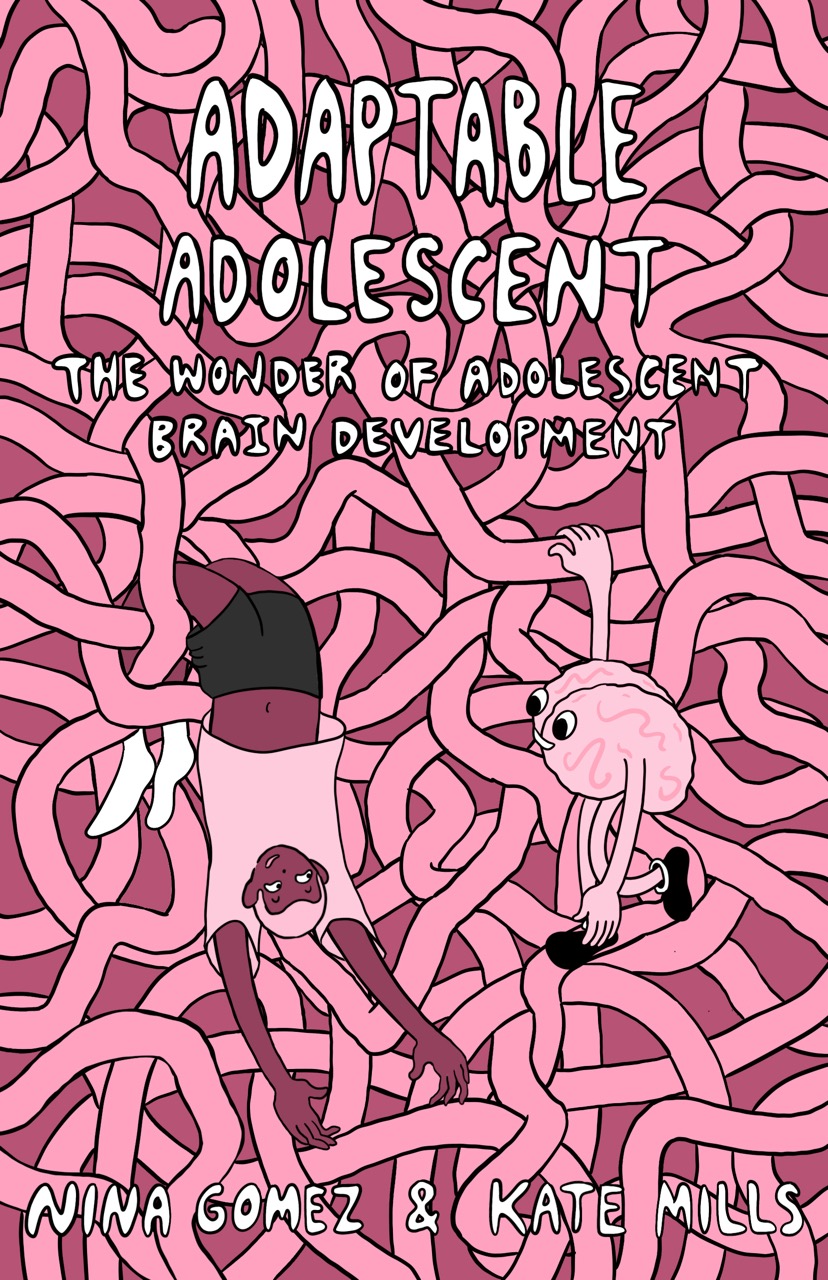
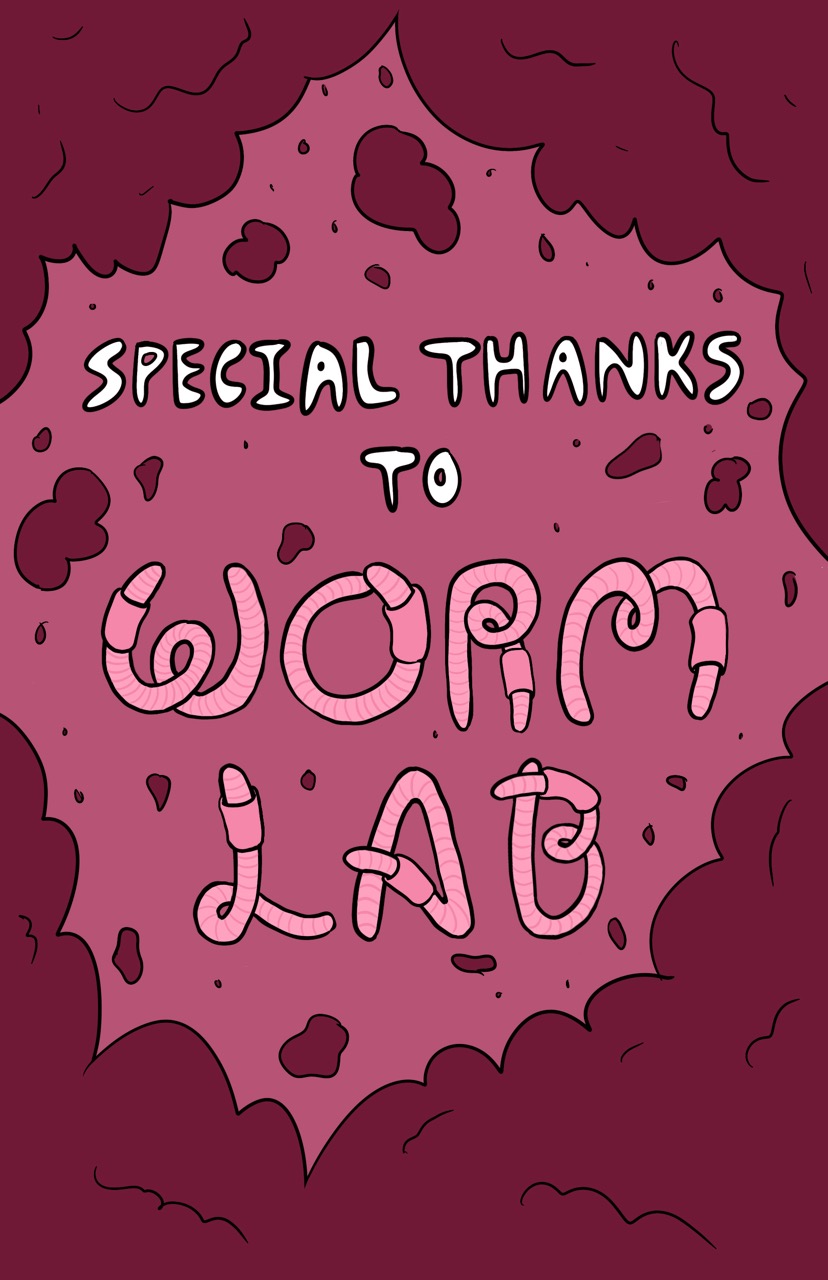
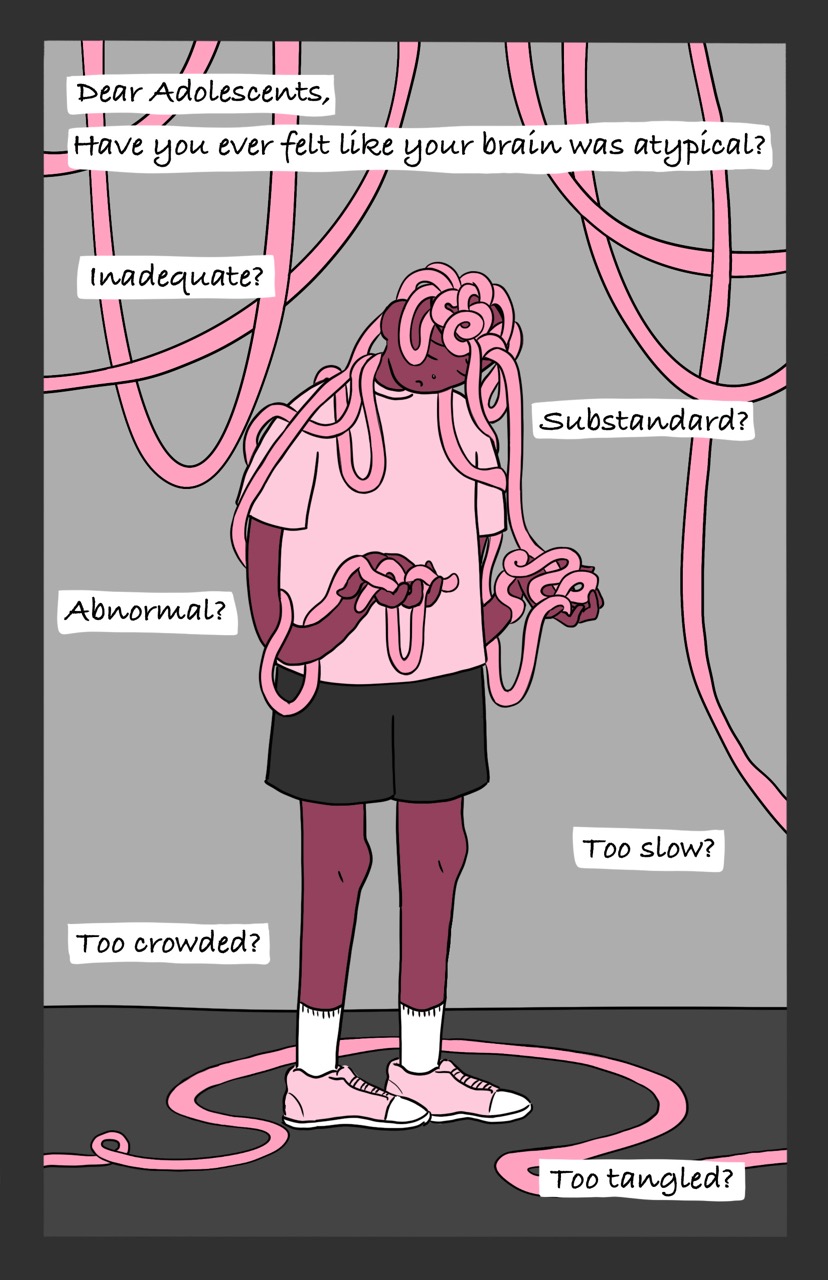

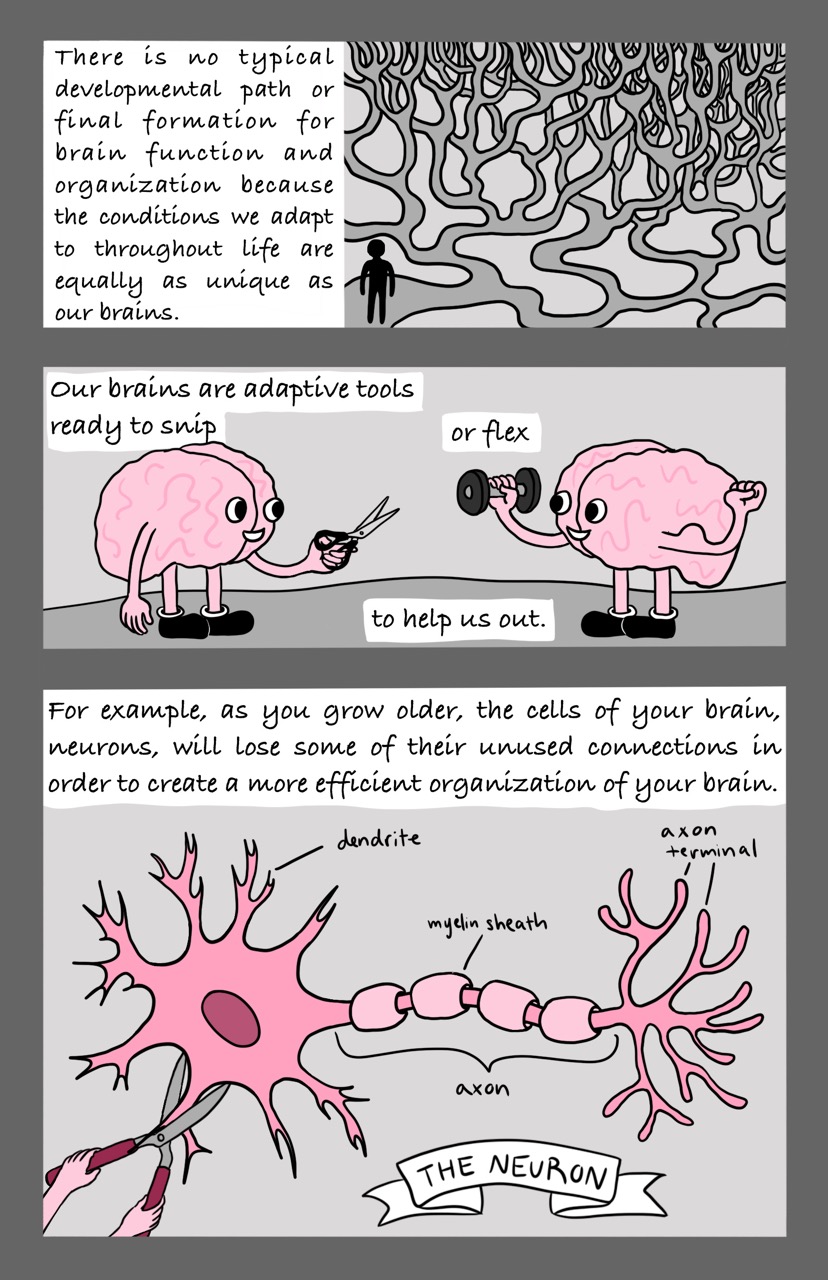
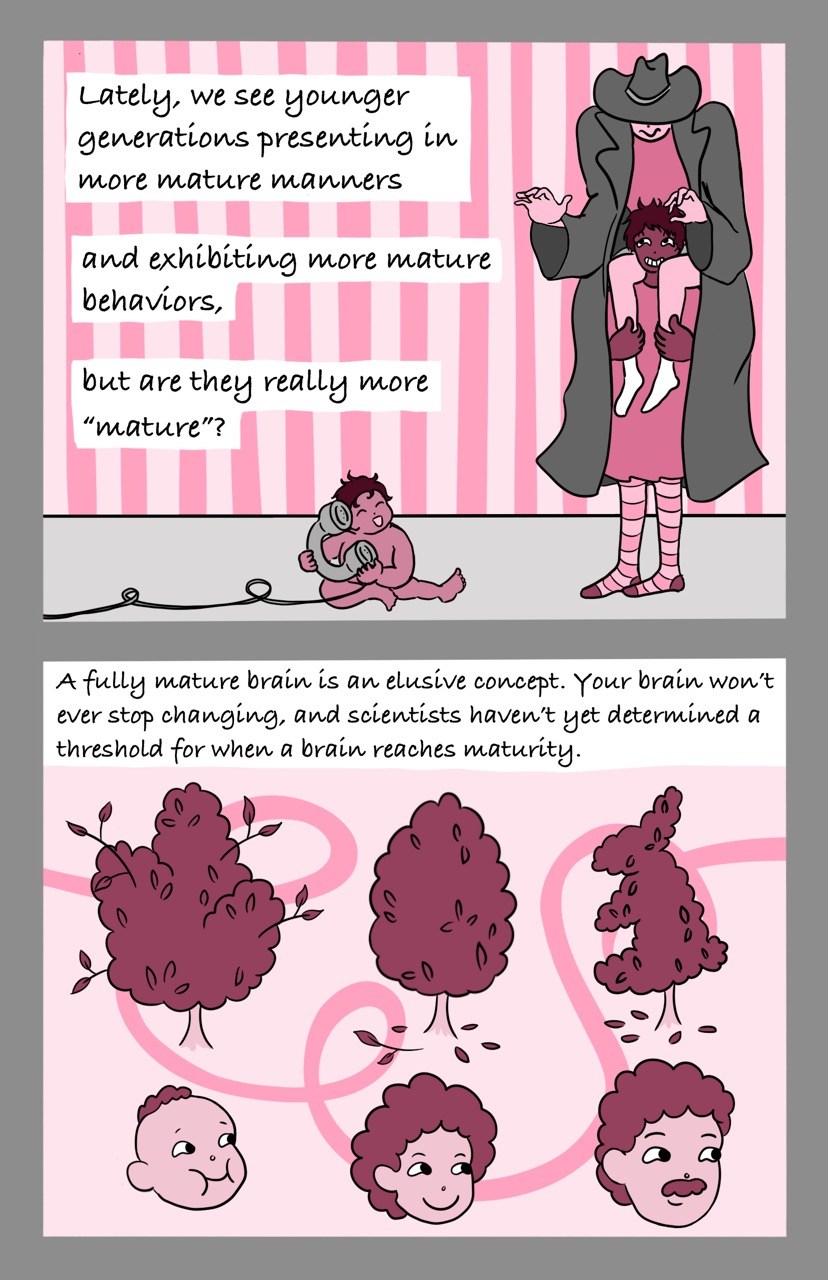
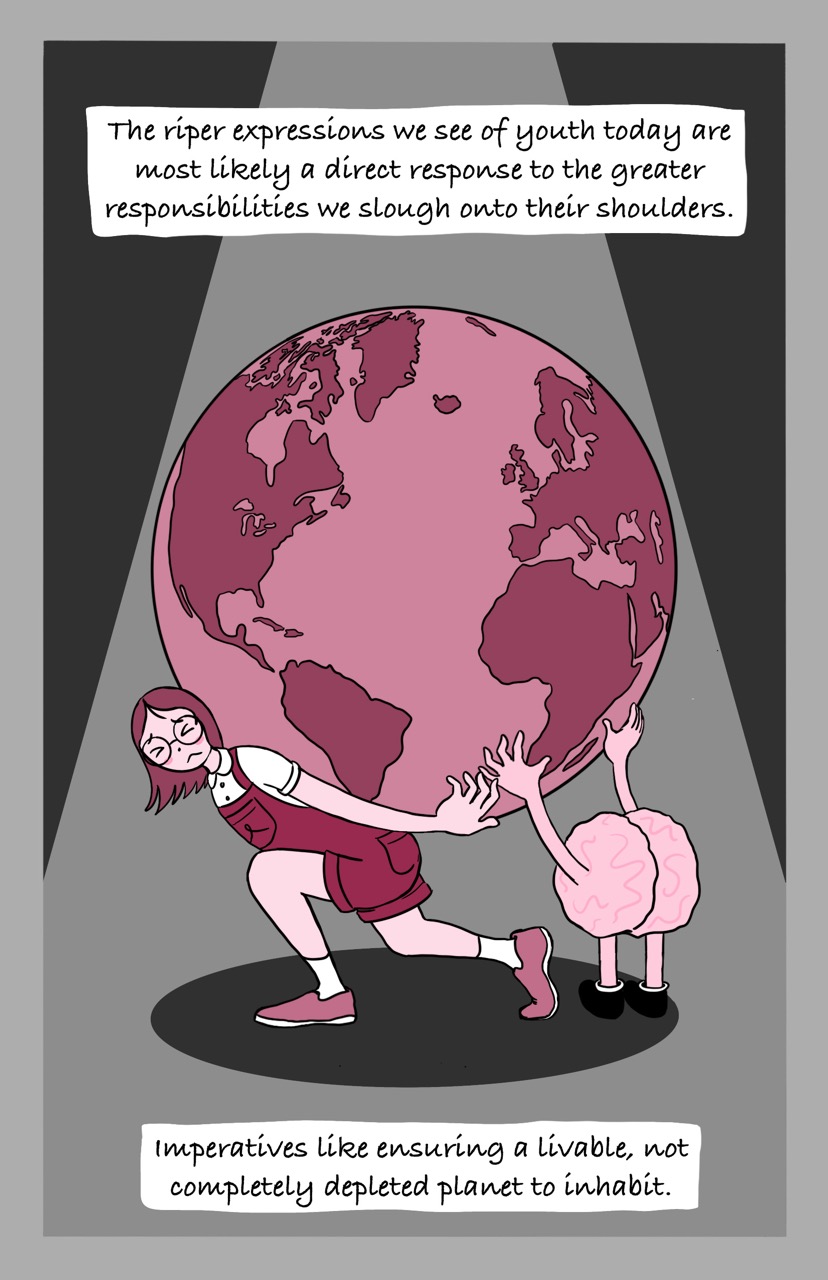
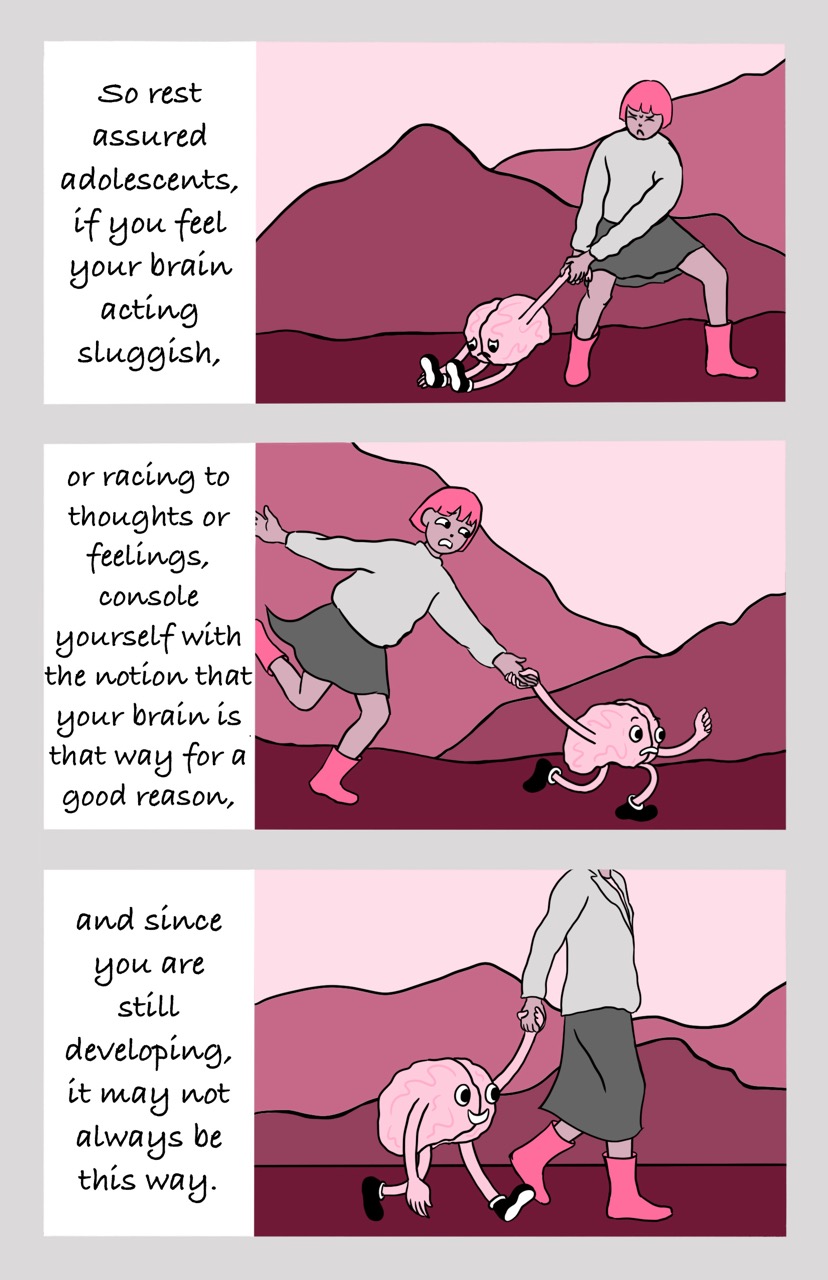

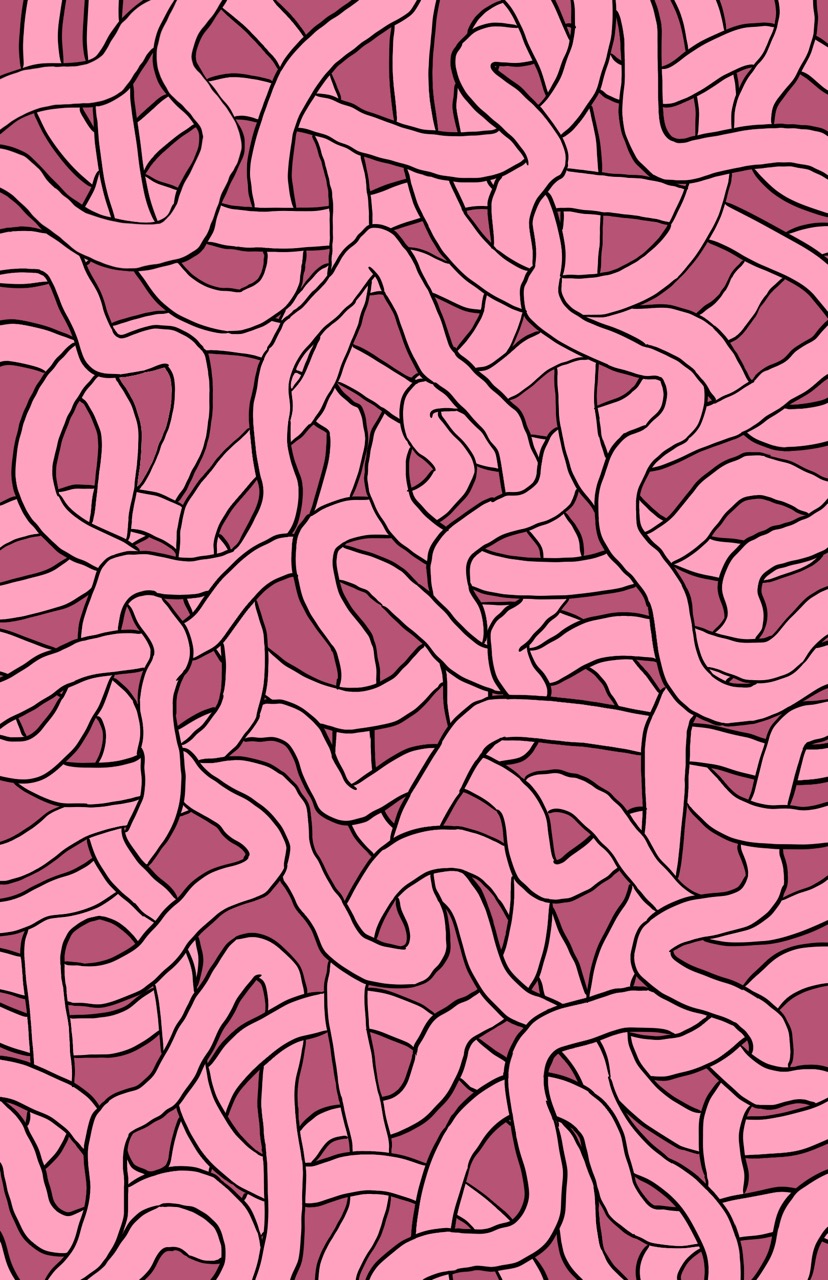
Transcript
Overview:
A 10 page comic including the cover and back cover. This comic is drawn in a friendly cartoony style using a limited pink and grey color palate. Image descriptions within the transcript are prefaced with “ID.” All other text is transcribed directly from the comic.
Cover
Adaptable Adolescent: The Wonder of Adolescent Brain Development Transcript
By Nina Gomez & Kate Mills
ID: The background of the cover is a maze of pink squiggles that evoke both worms and a brain. A teen with short hair and dark skin wearing shorts and a t-shirt hangs upside down from the pink worms. An anthropomorphic human brain with arms, legs, and a friendly face hangs next to them.
Page 1:
Special Thanks to Worm Lab
ID: The text “Worm Lab” is spelled out by worms.
Page 2
Dear Adolescents,
Have you ever felt like your brain was atypical?
Inadequate? Substandard? Abnormal? Too slow? Too crowded? Too tangled?
ID: the text cascades down the page. The teen from the cover stands sadly in the center of the page, pink worms spilling out of their head into their hands.
Page 3
What if I told you it was working exactly as a brain should, that there was no such thing as a neurotypical standard to deviate from because there’s no such thing as a typical brain.
Variability is the norm.
ID: The silhouettes of nine people’s heads arranged in a grid dominates this page. Each person has a different hairstyle and face shape, and there is a cartoon outline of a unique brain inside each silhouette.
Page 4
There is no typical developmental path or final formation for brain function and organization because the conditions we adapt to throughout life are equally as unique as our brains.
ID: a person stands at the beginning of an endlessly curving and branching path.
Our brains are adaptive tools ready to snip or flex to help us out.
ID: two anthropomorphic brains stand next to each other. One is holding scissors. The other is lifting a dumbbell and flexing.
For example, as you grow older, the cells of your brain, neurons, will lose some their unused connections in order to create a more efficient organization of your brain.
ID: a diagram of a neuron. On one side there is a star shaped dendrite with many branches coming off it. One branch is being snipped by scissors. The dendrite is connected to a long thin axon which is covered in protective cylinders called the myelin sheath. At the end of the axon are several smaller branches. The end of each branch is called the axon terminal.
Page 5
Lately, we see younger generations presenting in more mature manners and exhibiting more mature behaviors, but are they really more “mature”?
ID: a tall person in a trench coat and a cowboy hat is actually two kids, one sitting on the other’s shoulders. A baby sits on the floor holding a corded phone.
A fully mature brain is an elusive concept. Your brain won’t ever stop changing, and scientists haven’t yet determined a threshold for when a brain reaches maturity.
ID: 3 stages of development are represented by three faces: a baby, a child, and a young adult. Each phase is paired with a cartoon tree: the baby is an overgrown tree, the child is a trimmed and orderly tree, and the young adult is a tree neatly trimmed into the shape of a rabbit.
Page 6
The riper expressions we see of youth today are most likely a direct response to the greater responsibilities we slough onto their shoulders.
Imperatives like ensuring a livable, not completely depleted planet to inhabit.
ID: a spotlight focuses on a young white teenager struggling to hold the globe on her back, an anthropomorphic brain supports the world from behind her.
Page 7
So rest assured adolescents, if you feel your brain acting sluggish,
ID: A young woman with pink hair wearing a sweater and a skirt struggles to pull her brain which is seated sadly, refusing to move.
or racing to thoughts or feelings, console yourself with the notion that your brain is that way for a good reason,
ID: The young woman’s brain rushes ahead of her, pulling her along too quickly.
and since you are still developing it may not always be this way.
ID: The young woman, now wearing a blazer, walks alongside her brain comfortably.
Page 8
To summarize, stop working against your brain, and keep letting it work for you.
ID: The teen from the cover grins and fist bumps the anthropomorphic brain
Back Cover:
ID: The pink squiggles from the front cover completely cover the page.
